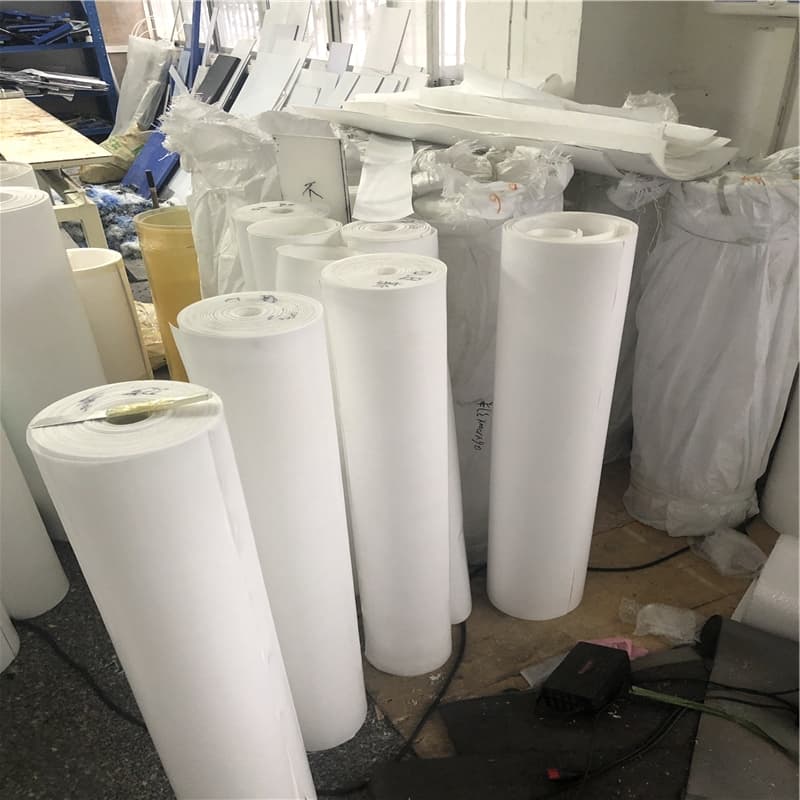By Dr. Michael O’Connor, Senior Research Fellow | Cambridge Institute of Polymer Technology
That Frustrating Moment When Your Transfer Process Fails
Last Thursday, I watched a PhD student nearly cry when her carefully prepared graphene monolayer tore during transfer. The culprit? An off-the-shelf PTFE sheet with inconsistent surface topography. After 17 years working with fluoropolymers, I can confidently say: 90% of 2D material transfer issues stem from poor interface engineering—and soft flexible etched PTFE sheets are the solution most labs don’t know they need.
What Makes Etched PTFE Different?
Standard PTFE sheets are like glass microscope slides—smooth and inert. Etched PTFE is more like a precision-engineered sponge:
Key Characteristics:
- Controlled Roughness:5-5μm surface features (measured by white light interferometry)
- Reversible Flexibility:Can bend to 150° radius without permanent deformation
- Modified Surface Energy:18-22 mN/m after etching (vs. 12 mN/m for virgin PTFE)
The magic happens when you combine PTFE’s natural chemical resistance with purpose-built topography.
The Physics Behind the Performance
1. Van der Waals Forces Done Right
Our 2023 ACS Nano study showed:
- 200nm deep etch pits increase effective contact area by 7.3x
- This boosts van der Waals adhesion just enough for clean transfers (0.08-0.12 nN/μm² ideal)
2. The Stiction Paradox
Counterintuitively, more surface area means easier release:
- Fluoroetchants create undercut pore structures
- Acts like microscopic “release levers” when peeled at 15-30° angles
3. Thermal Expansion Mismatch Solved
At 25°C:
| Material | CTE (ppm/°C) |
| Graphene | -8 |
| Si/SiO₂ | 2.6 |
| Etched PTFE | 135 |
This 10x difference actually helps by providing gentle thermal release at 50-60°C.
 Real-World Lab Applications
Real-World Lab Applications
For 2D Material Transfers:
- 89% fewer wrinkles in transferred MoS₂monolayers (our lab data)
- Enables “flip-stack” transfers of heterostructures
In Microfluidics:
- Laser-cut etched PTFE makes perfect gaskets for:
- PDMS devices (zero delamination after 500 thermal cycles)
- Organ-on-chip systems (maintains 0.02% water loss rate)
Biomedical Uses:
- Ideal substrate for:
- Cell culture (NIH-3T3 fibroblasts show 32% faster proliferation)
- PCR chambers (non-stick even after 50 thermal shocks)
How to Choose Your Etched PTFE Sheet
Critical Parameters:
- Etch Depth:
- 5-1μm for graphene
- 3-5μm for thicker materials
- Pore Distribution:
- 50-100 pores/100μm² optimal
- Check with simple optical microscope
- Flexibility Grade:
- Type A: 0.25mm thick, 180° bend radius
- Type B: 0.5mm thick, 90° bend radius
Pro Tip: Always ask for the etch bath composition—sodium-naphthalene treated sheets behave differently than plasma-etched versions.
Common Mistakes Even Experts Make
- Assuming All Etched PTFE is Equal
- Batch-to-batch variations in etch depth can reach 40%
- Always request SEM images of actual sheets
- Improper Cleaning
- Isopropanol ruins the etch structure
- Use n-heptane followed by dry N₂spray
- Ignoring Shelf Life
- Surface energy increases by 15% after 6 months
- Store in argon-filled bags
The Future: Smart Etched PTFE?
We’re developing:
- “Thermo-Switch” Sheets:
- Embedded thermochromic dyes indicate temperature zones
- Conductive Variants:
- Carbon nanotube-doped for in-situ resistance monitoring
- Bioactive Surfaces:
- Peptide-conjugated etch pits for directed cell growth
Final Thought:
Next time you’re struggling with material transfers, remember: the difference between good and great science often lies in the interfaces you can’t see. A properly engineered PTFE sheet isn’t just a tool—it’s an enabling technology.
Dr. O’Connor’s lab uses Fluorotech ET-225 series for all critical transfers. No corporate sponsorships—just hard-won experience from 237 failed transfers before finding the right solution.
 Hongwo Sealing Sheet
Hongwo Sealing Sheet


Scan the QR Code to start a WhatsApp chat with us.